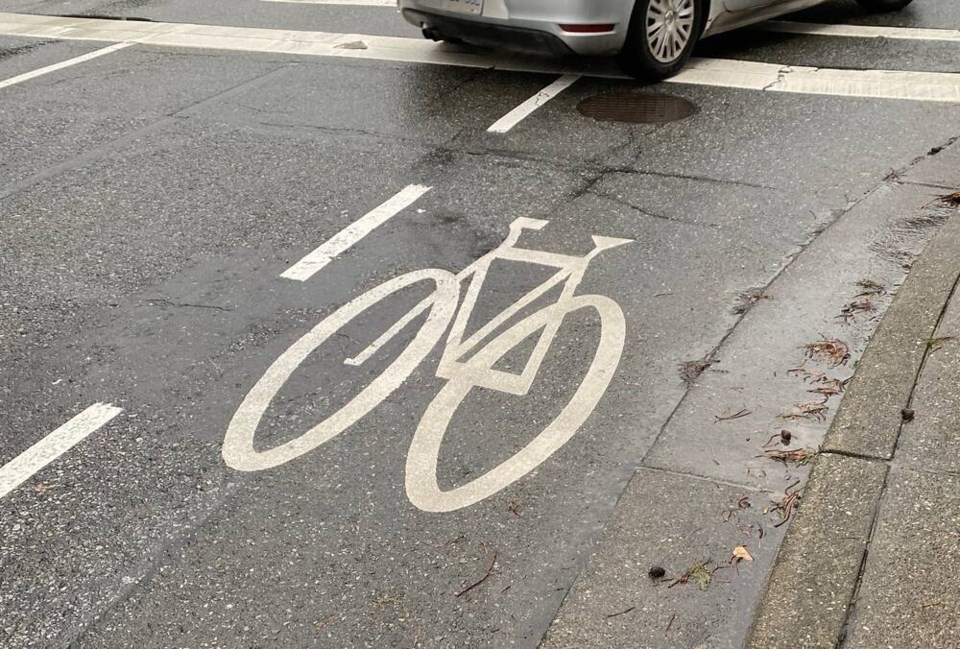I lived in Calgary as a kid and should by virtue of being there for a few years have understood about all things “snow.” Clearly the penny never completely dropped — as witnessed by a trip I made to Ottawa as an adult many years later. There, for some strange reason, they attached these 3-metre iron bars to the tops of their fire hydrants. Why on earth do that? My hosts shot me the dead pan “are you for real?” stare. Those bars were makers so that firefighters could locate hydrants buried under the piles of snow that the real Canada deals with every winter.
There are lots of road markers and devices out there these days and Alexander, a recent arrival from Alberta and Ontario, wrote to ask about some of the things we use in B.C. to guide people on our roads.
By now we’ve all seen those funny little blue and white light boxes which are perched on light standards next to traffic signals. It’s possible though that some drivers have never actually seen them in operation. They are emergency vehicle preemption signals. They will start flashing when they detect emergency vehicle strobes or an infrared transmitter and change the intersection signal lights. They can be programmed to give the passing emergency vehicle a green light and hold cross traffic on a red light or just turn the lights red in all directions.
How about those raised pavement markers then, or cat’s eyes, which have been with us for decades now? White ones divide travel lanes for traffic moving in the same direction. Yellow ones tell us that there is a centre line in the roadway and the traffic to your left is coming at you from the opposite direction. Red ones are wrong way indicators. Don’t go any further — they are telling you you’re headed in the wrong direction and they are only visible from the “do not enter” direction. Green ones are a little more rare. They indicate an emergency access gate, maintenance turn off or utility access.
Finally there are the blue ones which still stump a few people. Those are embedded in the road to tell firefighters there is a roadside hydrant at that location. These shouldn’t be confused with blue reflective tabs which appear often on the tops of concrete highway dividers. These retroflective markers help drivers see barriers better at night and in bad weather.
But wait there’s more. Ever drive out in the morning to find that your street has been spray painted with lines resembling graffiti. That usually means trouble ahead — yet more road work pending. Red lines mean electric power lines or conduits. Yellow means gas, oil or steam lines. Green is for sewer or drainage. Blue, potable water. Orange is for communication cables.
There are dozens more markers out there but what are increasingly common around here are things like “shark’s teeth” — triangular white yield markings pointing towards approaching traffic and “elephant’s feet” which are large square green patches telling us that the lane is to be shared with bikes.
Finally, there are the variable bike lane markers, which I didn’t like at first, but on a narrow street I now have to admit they make sense once you’re used to them. The bike lane is marked with a broken white line. You may drive in the bike lane to avoid oncoming traffic. If the bike lane is occupied in your direction, you yield to the bike and any oncoming traffic until it’s clear, then you may pass the bike when it’s safe. Pretty good idea but when you first see all those lines it can be confusing.
Glove Box: The column two weeks ago about dealing with approaching emergency vehicles contained an error. I had forgotten about a 2012 amendment to the motor vehicle act which was put into place to deal with the increasing number of divided highways throughout the province. When the highway is divided by a solid barrier like a concrete wall or a built-up island and an emergency vehicle is approaching from behind you are required to pull to the nearest edge or curb of the road, which could be on your left. That makes sense. This avoids the increased risk of crossing multiple lanes to get to the right hand edge as an ambulance tries to move through. But whenever you’re pulling over, let the emergency driver know what you’re doing — with your turn signals. Thanks to those emergency responders who wrote in to straighten me out on that one.



